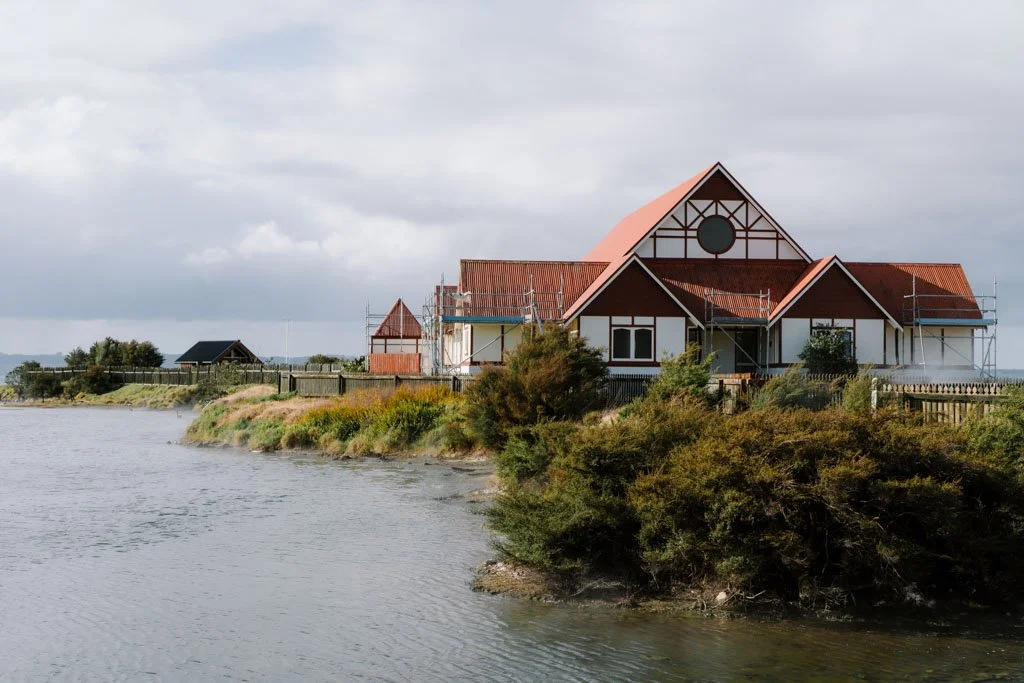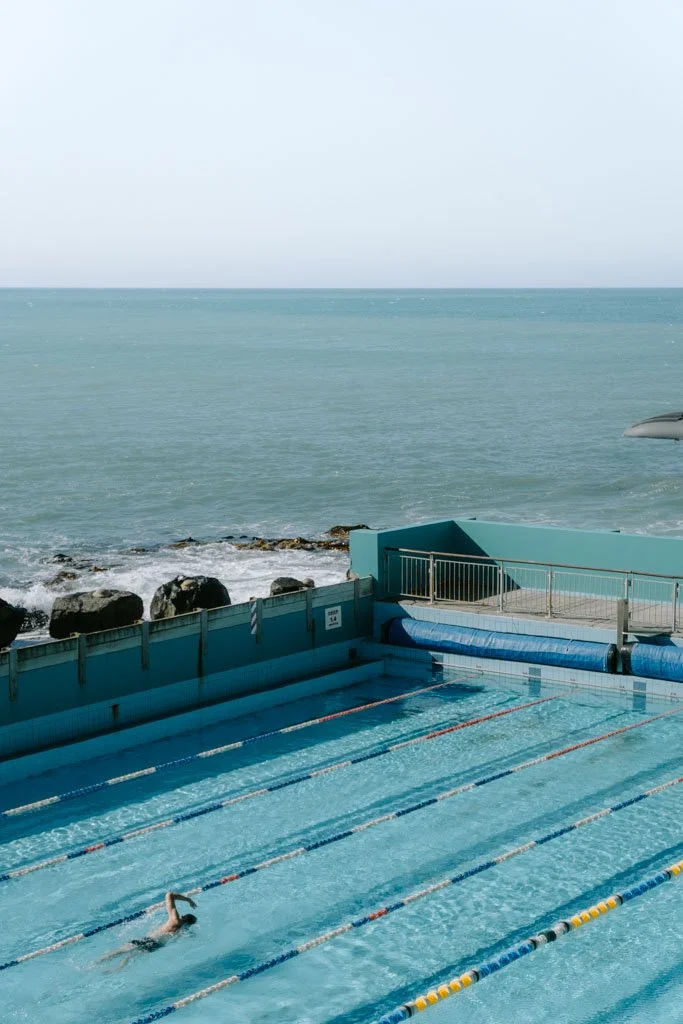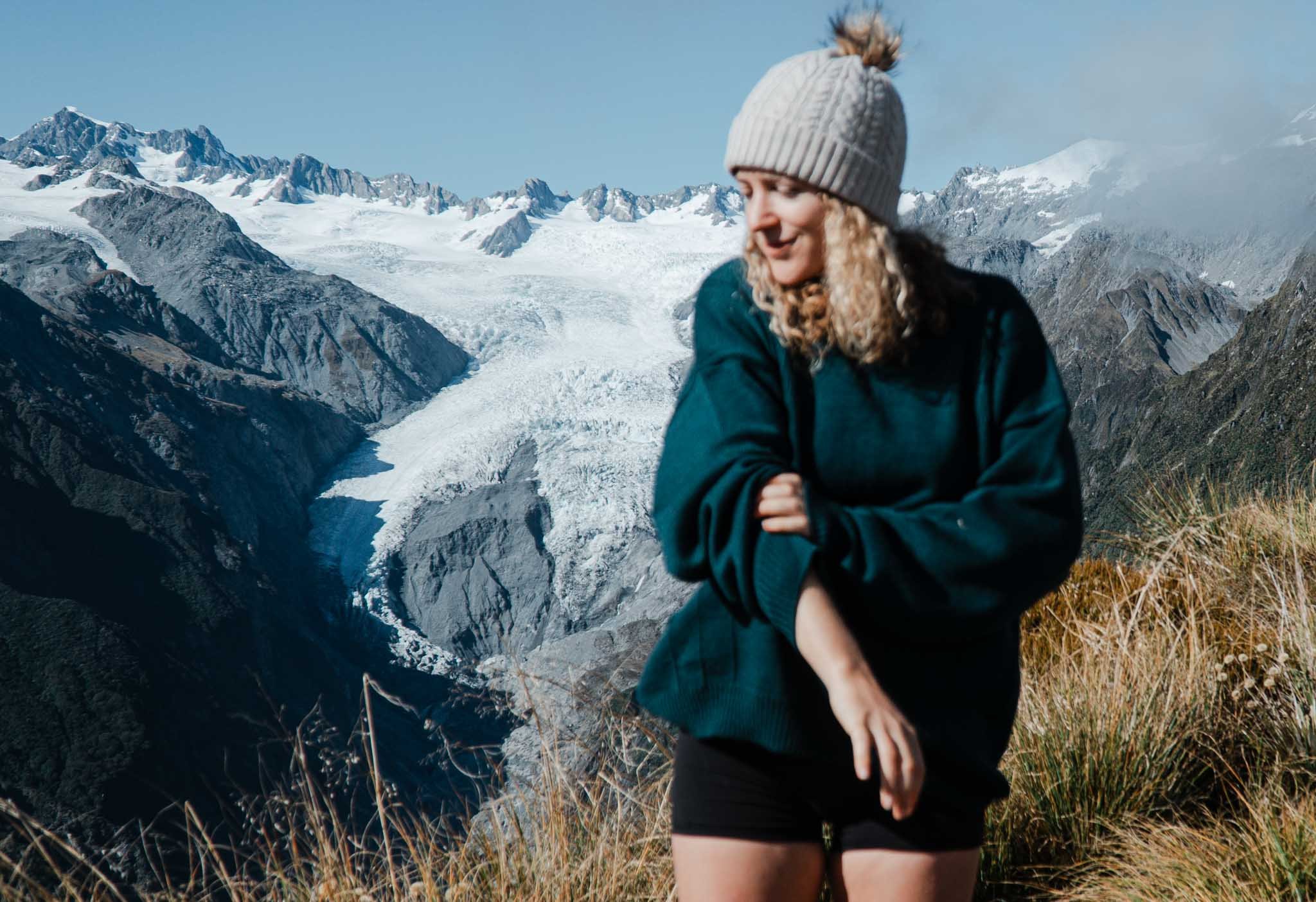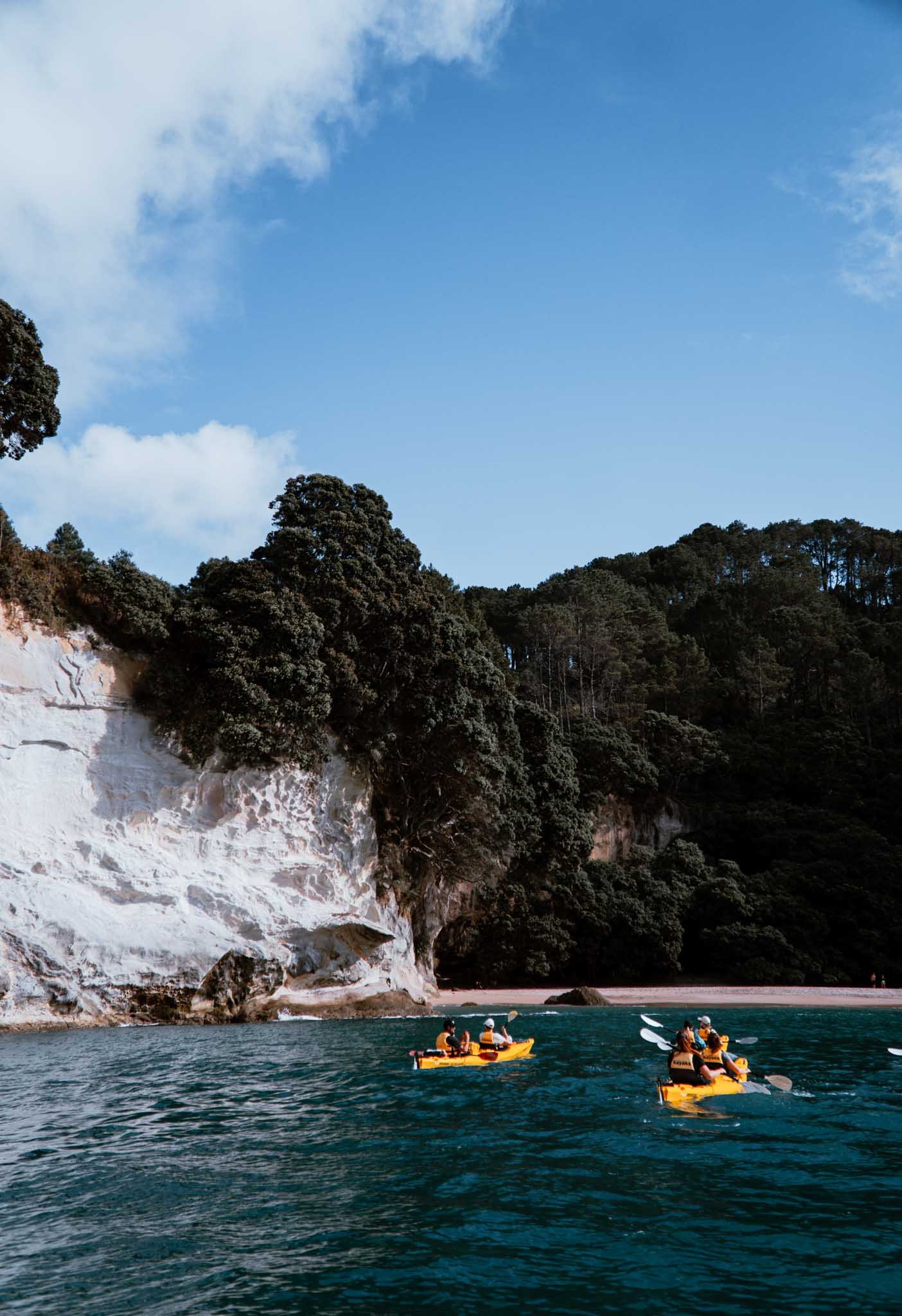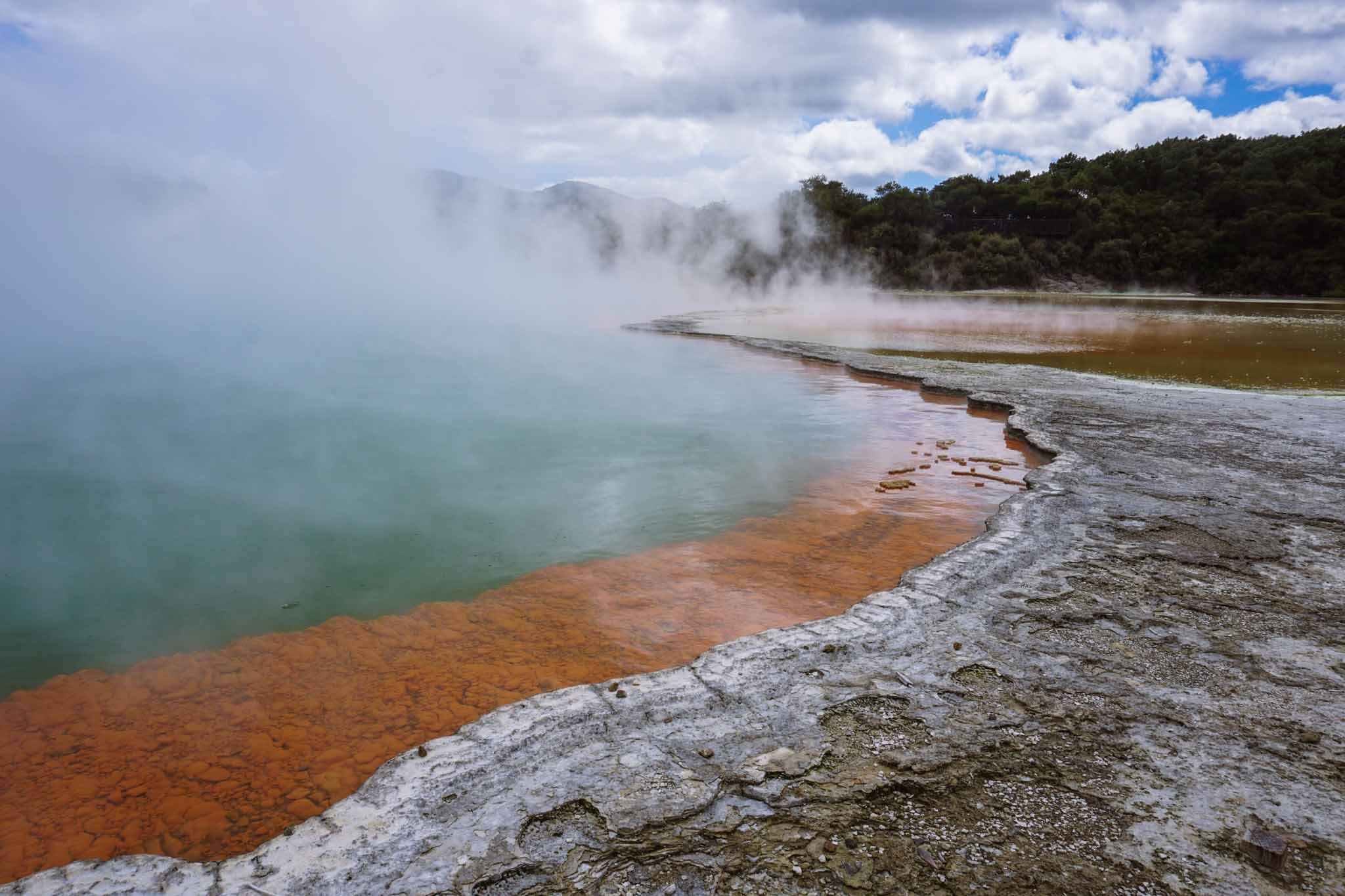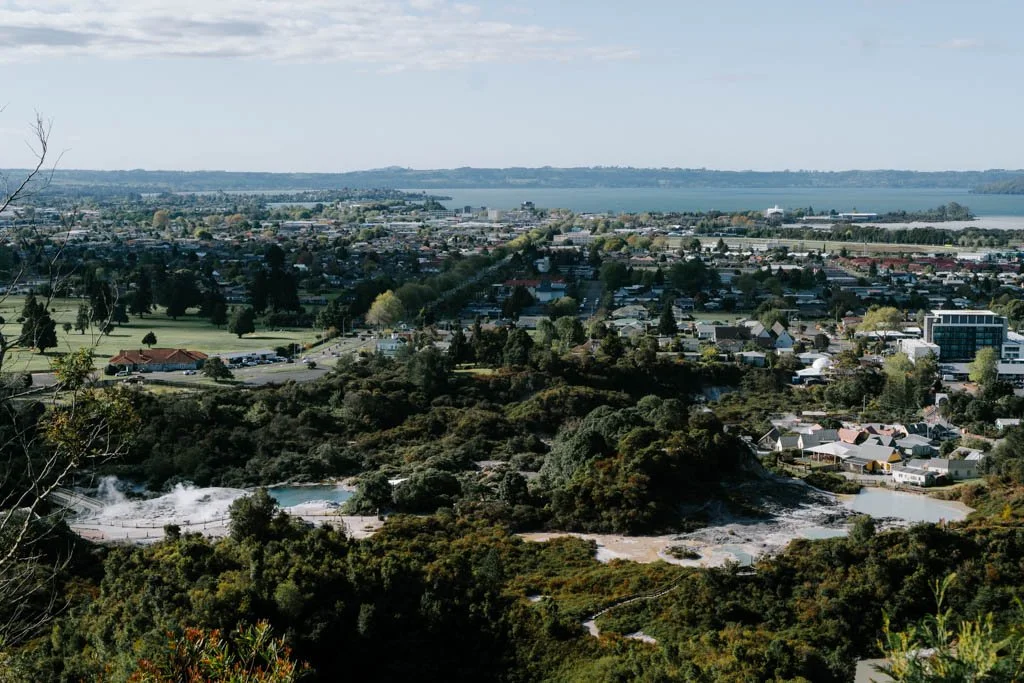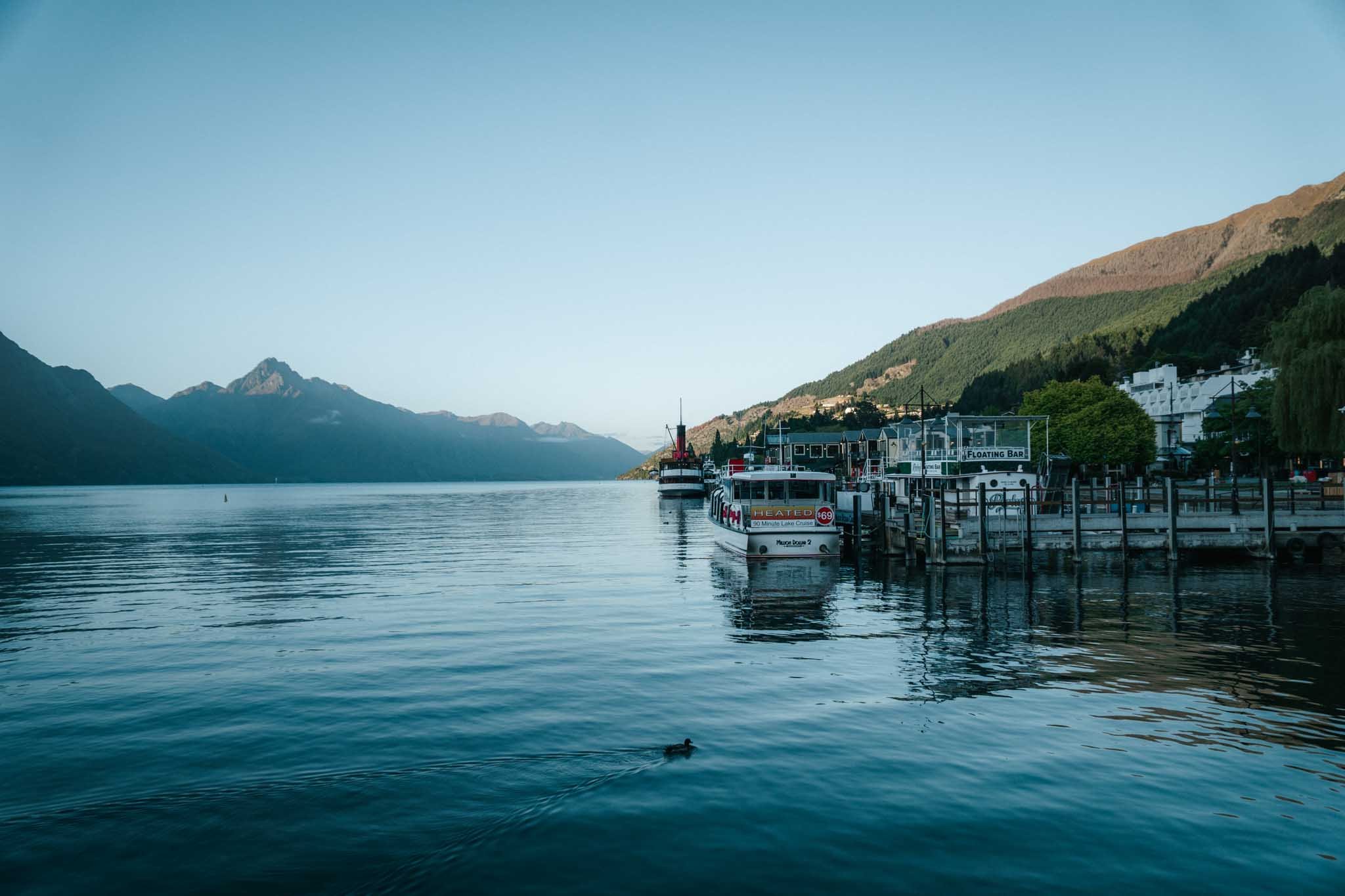The best cities in New Zealand to visit
The urban hubs in New Zealand worth exploring
This article contains affiliate links, which means I may make a small commission (at no extra cost to you) if you make a purchase through those links. Thanks for your support.
No one flies halfway around the world to see Auckland’s Sky Tower.
The truth is, most of what makes New Zealand special lies outside its cities. We’re good at nature, not urban edge.
Our cities are often snarled up with traffic and construction, with sprawling modern suburbs and poorly planned centres.
If you think I’m being harsh, it’s just because I see a lot of wasted opportunity in our cities and towns. Why, I beg you, is Taupo’s waterfront lined with a parade of fast food — Burger Fuel, KFC, Subway, McDonalds, Burger King?
The lakefront in Taupo is pretty, but instead of getting to sit on a nice patio in the sunshine, enjoying the view, you can sit in a greasy fast food joint and regret your choices.
It’s not that dismal in every town in New Zealand though.
Wanaka stood up to the fast food giants and managed to stop a new McDonalds coming to town. Heck yeah, now that is a cool town — and Wanaka has an amazing lakefront.
My cynicism aside, if you know where to look, New Zealand’s cities have their own charm. We love coffee, so you’ll find fantastic little coffee roasters; top notch restaurants; and shops and galleries featuring our many talented artists and makers.
New Zealand cities may not compete with the old-world beauty of Luxembourg, but they can be interesting in their own right. Some of them, anyway.
Auckland, New Zealand's biggest city
The Auckland city skyline at sunset — I took this from the top of North Head, one of Auckland’s small volcanic cones
WHY GO: You’ll probably arrive into Auckland, so it can be nice to spend a night here and recover from the flight.
WHAT TO EXPECT: A sprawling city with a concrete jungle centre, and a woefully underutilised waterfront.
HOW MUCH TIME TO SPEND IN AUCKLAND: Two nights is enough to get a sense of the city and head off on a day trip to Waiheke Island.
A HIGHLIGHT: I think one of Auckland’s coolest features is the volcanic cones that stud the city — head to North Head in Devonport for panoramic sunset views, or Mt Eden/Maungawhau to see an epic crater.
In another remote hostel in Northland I chatted with a couple from China, who had been studying in Auckland for a couple of months. The woman said something that surprised me.
Auckland feels a lot like China, she told me.
I was surprised that our little island nation might be anything like China, but she said it feels like cities everywhere; concrete, glass, people rushing to get around, no one stops to talk to each other.
She has a point.
It’s not the prettiest, but Auckland is New Zealand’s largest and most populated city, home to over 1.7 million people.
This is where most visitors arrive into New Zealand, as Auckland International Airport is the largest airport in the country.
You’ll hear New Zealanders refer to people who live in Auckland as JAFAs — “just another f**king Aucklander.” There’s a bit of resentment toward Aucklanders, and the general sentiment that Auckland is bland and boring as a city.
The city centre in particular is fairly dismal.
Queen Street is particularly grim, a long, grey strip of highly commercial stores. There’s little personality to be found here, and in the evening it also doesn’t feel particularly safe or inviting.
I don’t think Auckland is as bad as most people make out, but it’s true that it’s also not an exceptional destination. As a visitor, Auckland is convenient and has a few cool things to see, but it’s not going to be a place you rave about to your friends when you get home.
It’s worth stopping in Auckland for a couple of nights to get your bearings, and to eat, shop, and visit a couple of museums and galleries.
Beyond this, you’ll probably want to head out of the city as soon as you can.
THE BEST THINGS TO DO IN AUCKLAND
The highlight of Auckland is probably Waiheke Island — jump on the ferry for a fun day trip of wine, beaches, and island vibes.
My favourite part of Auckland is Karangahape Road (so much so I wrote about it for the Washington Post). Go for a wander to check out some cool stores and great places to eat (Bestie Cafe for breakfast, Pici, Apero, Candela, or Coco’s Cantina for dinner).
Rangitoto Island is a scenic 10-minute ferry ride from the city centre. The summit is a very doable hike with great views.
FEATURED HOTEL
The Hotel Britomart
Unique design, unlike anywhere else in the city, with a sustainable and local focus.
FEATURED HOTEL
Fable MGallery
An Art Deco style hotel in a heritage building right on Queen Street.
Queenstown, New Zealand's adventure capital
WHY GO: Queenstown makes the ideal base for visiting some of the South Island’s most dramatic scenery, like Milford Sound and Fiordland National Park.
WHAT TO EXPECT: A buzzy, busy little town that feels way commercial than other cities in New Zealand. There are many ‘things to do’ in the sense that you can go bungy jumping or take a shark-shaped submarine into Lake Wakatipu.
HOW MUCH TIME TO SPEND IN QUEENSTOWN: You could easily spend up to five nights in Queenstown, depending on how many day trips you want to do i the area. To see Queenstown itself, two nights is fine, and if you’re not into bungy jumping, one night would do.
A HIGHLIGHT: For me, the best parts of Queenstown are outside the town itself; I love the hiking around Glenorchy, like the Routeburn Track and the Earnslaw Burn.
With a population under 15,000, Queenstown is more of a small town than a city.
However, thanks to its prime location close to some of the South Island’s best attractions, Queenstown is one of the buzziest places to visit in New Zealand.
The town has big city energy.
Queenstown is well worth visiting, thanks to its proximity to so many epic adventures. You could easily spend a week in Queenstown while you explore the hiking trails, wineries, national parks, and adventure activities on offer.
Most people visit Queenstown for the scenery and the adventure sports on offer.
Queenstown is the birthplace of commercial bungy jumping, so you can take the plunge at the original Kawarau Bridge Bungy site. For stunning views, go skydiving or paragliding and see the lake and mountains from up high.
Queenstown’s lakefront, early morning
In winter, Queenstown transforms into a ski and snowboard hub. It’s home to four ski fields, including the popular Coronet Peak and The Remarkables. You can also go skiing, snowboarding and luging.
When the snow melts, the hiking trails open up. There are walks for all fitness levels, including the world-famous Routeburn and Milford tracks.
The only caveat to visiting Queenstown is that it can be very touristy. I don’t love the town centre, because it is overwhelmed with tour companies, kitschy tourist shops, and rowdy bars.
I took this photo from the balcony of the hostel where I last stayed in Queenstown (Tahuna Pod Hostel) and I think the combination of traffic lights, cars, and cones everywhere, set against a naturally beautiful backdrop, kind of sums up Queenstown.
If like me you prefer quieter places that still have easy access to the outdoors, try staying in Wanaka or Glenorchy instead.
You can still visit Queenstown and get a sense of what the town is like, but you can escape the business and all the challenges that come along with it (parking is a nightmare in Queenstown, and you often have to make restaurant reservations well in advance).
The best things to do in Queenstown
Visit the wineries in the Gibbston region between Queenstown and Cromwell
Get a taste of Central Otago at Queenstown’s best restaurants
Visit Glenorchy for stunning walking trails and famous Lord of the Rings film locations.
FEATURED HOTEL
Stay of Queenstown
Independently owned, perfectly located, and very welcoming.
Christchurch, the biggest city in the South Island
WHY GO: Christchurch is a main transit hub in the South Island — there’s a good chance you will fly into or out of this city.
How much time to spend in Christchurch: Stay a night to enjoy walking around the city, or if you have more time spend two nights to see more of the city. You probably don’t need longer unless you have the luxury of a longer trip.
WHAT TO EXPECT: A pretty, walkable city with lovely gardens and a picturesque river through the middle.
A HIGHLIGHT: New Regent Street in the city centre is gorgeous and has some great places to eat and drink — it’s a mini highlight reel of Christchurch.
Christchurch is the largest city in the South Island, located just above the elbow of the Banks Peninsula.
I always enjoy visiting Christchurch, because it has a good mix of everything.
There are some great places to eat and drink in the city centre (like Rollickin Gelato on New Regent Street, and Grizzly Baked Goods).
There are also plenty of gorgeous green spaces. Known as the “Garden City,” Christchurch is famous for its parks, gardens, and the serene Avon river which runs through the centre.
Christchurch is a key transport hub, acting as a gateway for exploring more of the South Island. You’ll probably pass through at some point, and if you have the time staying for two nights or more means you can get to know the city a little.
From here you can take the train to the West Coast, go on a road trip to Queenstown via Aoraki Mount Cook National Park, or drive north along the coast to Kaikoura.
The best things to do in Christchurch
I loved spending time in Tūranga, the central library. It’s a huge, airy, light building and from the fourth floor you get a great view of Cathedral Square, the historic heart of the city.
Stroll down New Regent Street, famous for pastel buildings and the tram which rolls right through the middle of it.
Lyttelton is a great day trip destination from Christchurch — there are a couple of coffee roasters, walking tracks into the Port Hills, and a cool village vibe.
The He Puna Taimoana Hot Pools are awesome to visit. From the sauna you get a great view of the New Brighton Beach and Pier.
Wellington, New Zealand's capital city
WHY GO: The main reason to stop in Wellington is if you’re taking the ferry to or from the South Island — it’s probably not worth the trip in and of itself if you’re short on time.
WHAT TO EXPECT: A walkable city with a great waterfront (streaks ahead of Auckland’s) and the national museum, Te Papa. Oh, and many people in government jobs.
HOW MUCH TIME TO SPEND IN WELLINGTON: A one night stop over is enough to go for dinner at an awesome restaurant and get coffee and a cheese scone the next day, but if you’re interested in history or politics two nights is better. You can visit Te Papa and the National Library, or other places that are pretty important.
A HIGHLIGHT: Honestly, I love getting cheese scones when I’m in Wellington. A flat white and a cheese scone just feels like the thing to do there. That, and the amazing Writer’s Walk around the waterfront.
Wellington, the capital city of New Zealand, is the coolest city in the country.
Wellington is famous for its vibrant arts, music, and food scenes — the city is home to Weta Workshop, world-class restaurants, and the national museum Te Papa Tongarewa.
With a population of just over 400,000, Wellington has been ranked as one of the world's most liveable cities. It has a nice walkable centre, lots of green spaces, and a gorgeous waterfront.
I always love visiting Wellington, as the city has both natural beauty and a fun urban vibe.
Wellingtonians are famously into coffee, craft beer, and food, so the city is a hot spot for dining and drinking.
Wellington is also home to New Zealand’s parliament buildings, the adorably named Beehive.
It’s well worth stopping in Wellington for a night or two. If you’re travelling by car or campervan, the city is the gateway to the South Island, with inter island ferries running several times a day.
If you plan on transiting through Wellington, stick around for a couple of days to explore the compact city centre and picturesque waterfront.
What I love about Wellington is how compact the city centre is. You can easily walk around most of the main attractions, and the waterfront is a lot more pedestrian friendly and visually beautiful than Auckland’s.
You can also strike a good balance of city and nature in Wellington.
You can see seals on a great short walk at Red Rocks Reserve, and kaka often frequent the city.
Orcas occasionally swim into the harbour — I used to work from an office on the 24th floor of one of the central buildings, and there was always a pair of binoculars at hand in case fins were spotted in the harbour.
The best things to do in Wellington
Check out the national museum, Te Papa Tongarewa, which houses a world-class collection of cultural artifacts, artworks, and interactive exhibits. Admission to the museum is free.
Take in a show at one of the many theaters, like the historic St. James Theater or Circa Theater. You can catch everything from musicals to plays by local writers.
Explore Cuba Street, Wellington's bohemian quarter filled with street art, music venues, bars, and eclectic shops. Wellington is a city of coffee lovers, so stop in at one of the hip cafes for a flat white coffee and a sweet treat.
Don't miss Zealandia, the world's first fully-fenced urban ecosanctuary. Just minutes from the city center, you can see native wildlife like kiwis, tuatara, and rare birds in their natural habitat.
Check out the latest exhibits at City Gallery Wellington or Adam Art Gallery, two of the city's leading contemporary art institutions which showcase innovative works by New Zealand and international artists.
For a great day trip, head over the Remutaka Ranges to Martinborough, where you can discover Wairarapa wine.
Rotorua, New Zealand's geothermal town
Rotorua can be a little touristy compared to other New Zealand towns, but the unique sights in the town mean it’s well worth visiting.
No one visits Rotorua for the town itself — it’s really just another small New Zealand town. But, the geothermal activity in the area make it one of the must-see places to visit in New Zealand.
The town itself is made interesting by the bubbling, sulphur smelling volcanic activity right under the surface. You only have to wander through Kuirau Park (free to visit) to see steaming vents and bubbling mud.
Located roughly in the middle of the North Island, Rotorua sits within a volcanic caldera, with hot springs and geysers galore.
Rotorua is also the cultural heart of New Zealand with a strong Māori influence. Around one third of the population have Māori descent.
This is one of the few places in New Zealand where you can see what the country looked like before European settlement.
Rotorua’s geothermal activity and Māori culture make it a must-see destination in New Zealand. There are so many natural and cultural attractions that you’ll need at least 2 to 3 days to experience it all.
The best things to do in Rotorua
You can experience an authentic Māori cultural performance with traditional songs, chants, dances and a hangi feast at Te Pā Tū.
Te Puia, a geothermal park where you can see the Pōhutu Geyser erupting up to 20 times a day, as well as bubbling mud pools and hot water pools.
Waimangu Volcanic Valley, the world’s youngest geothermal valley formed after the eruption of Mount Tarawera, where you can see the big blue Frying Pan Lake.
Visit Whakarewarewa Forest, a stunning redwood forest just outside the city with hiking and biking trails galore. For something extra special, check out the Treetops Walk.
Dunedin
Dunedin is the second largest city in the South Island.
The city has noticeable Scottish heritage — Dunedin is Gaelic for Edinburgh.
Dunedin is famous for being a student city. It’s home to the University of Otago, New Zealand's oldest university. The student population of over 21,000, gives the city an energetic and sometimes chaotic vibe (the students here are famous for burning couches in the street).
Don’t let that put you off, though. There are lots of fun things to do in Dunedin, and the city is a great base for discovering local wildlife like penguins, fur seals, sea lions and albatross.
Dunedin is also a stunning beach destination, with gorgeous spots like St Kilda Beach and Tunnel Beach.
Dunedin is also the jumping off point for exploring epic spots like the Catlins, with the famous Nugget Point Lighthouse.
The best things to do in Dunedin
Visit the Royal Albatross Center to see the world's only mainland breeding colony of northern royal albatross.
Thank you for reading
You being here is what makes my life as a travel writer possible, so thank you. I hope this has been helpful and you have come away with a better idea of how much time to spend in each New Zealand city.
All of the photos and words (and spelling mistakes and other errors) on this page are mine, created without help from either AI or other humans.
My goal is to try and make sure your travels around New Zealand are the best they can be, in exchange for your support. Reading my posts, clicking my links, sharing with your friends; all of this helps me keep doing what I’m doing.
So, thank you again, and while you’re here, maybe take a look at a few other articles:
AUTHOR BIO
I’m a freelance travel writer from New Zealand with bylines in National Geographic Travel, Conde Nast Traveler, Travel + Leisure and more.
I’ve travelled up and down beautiful Aotearoa and I love sharing my recommendations for the best places to visit in New Zealand.








